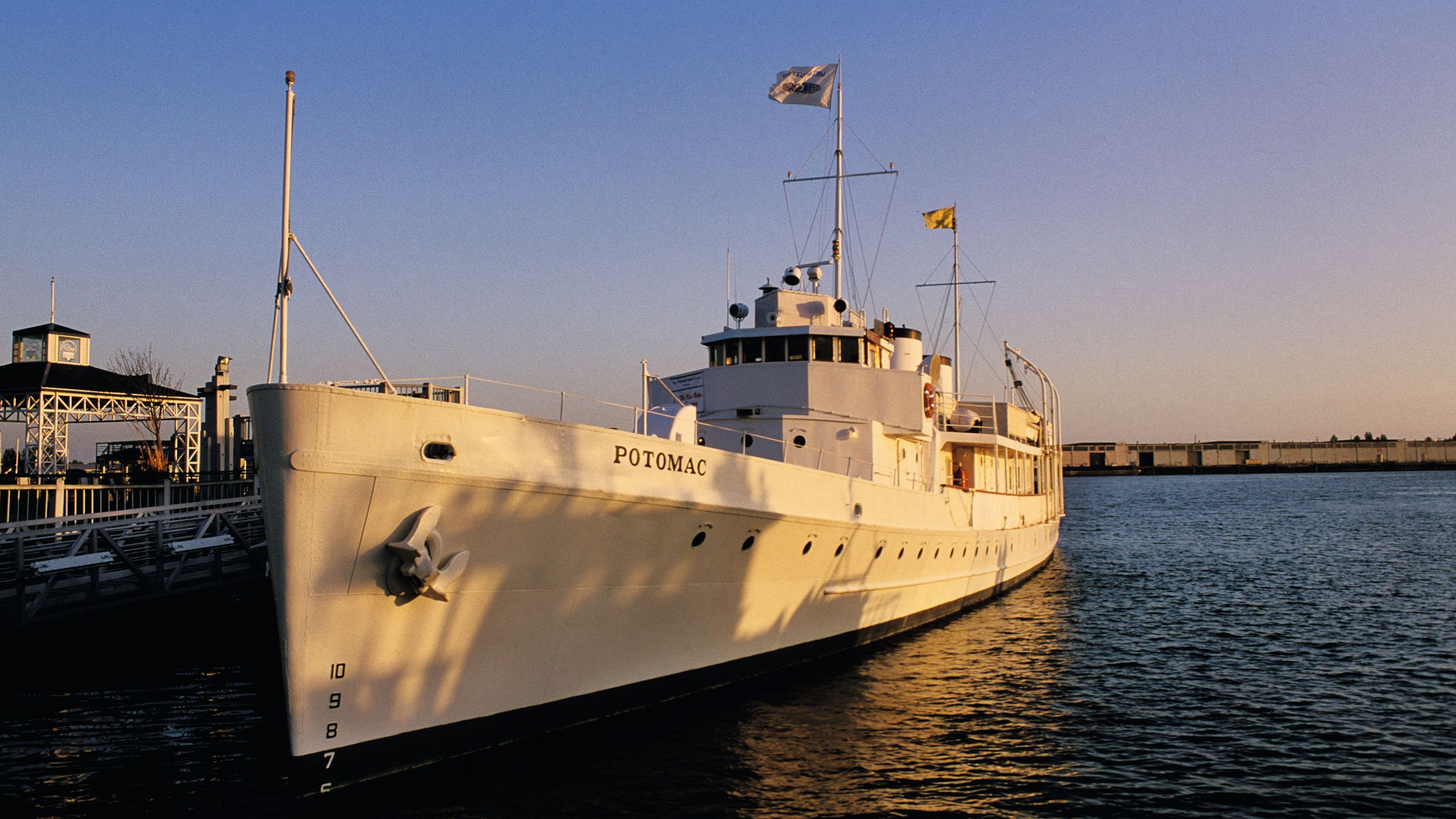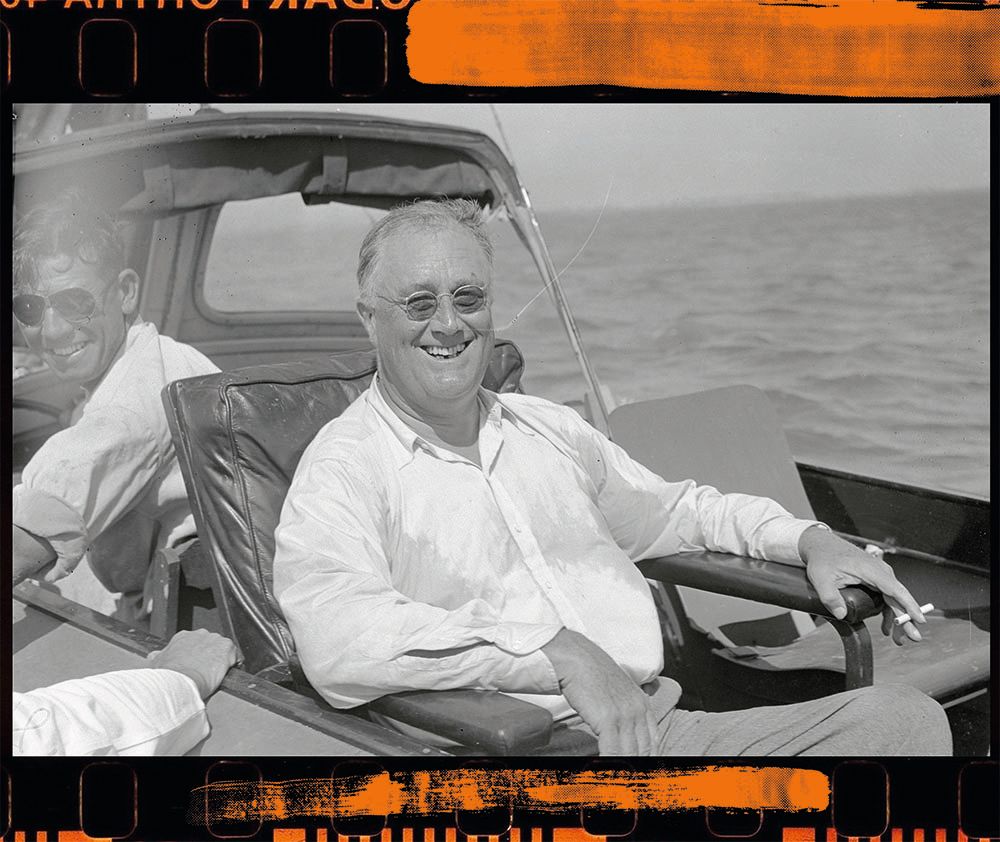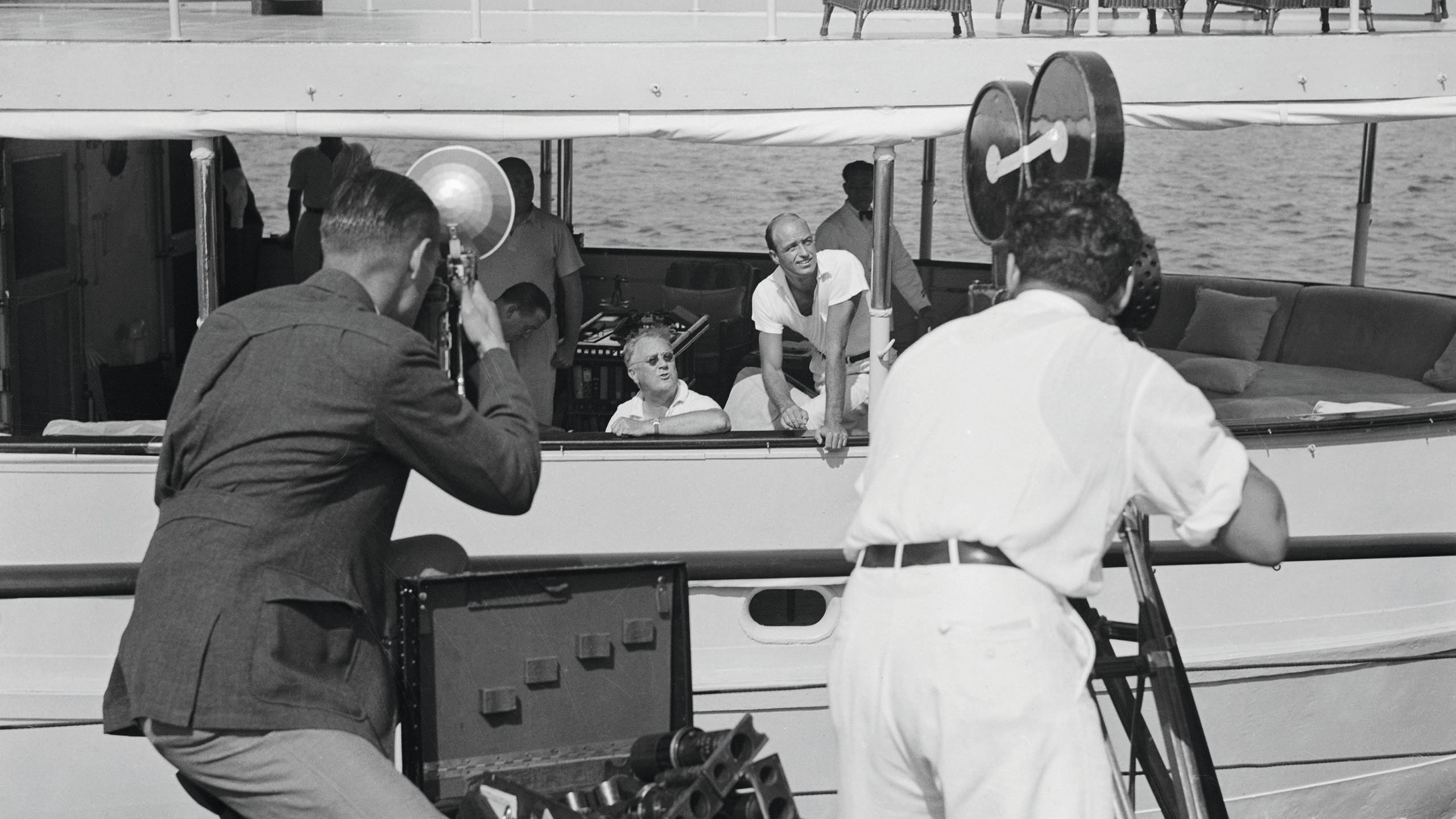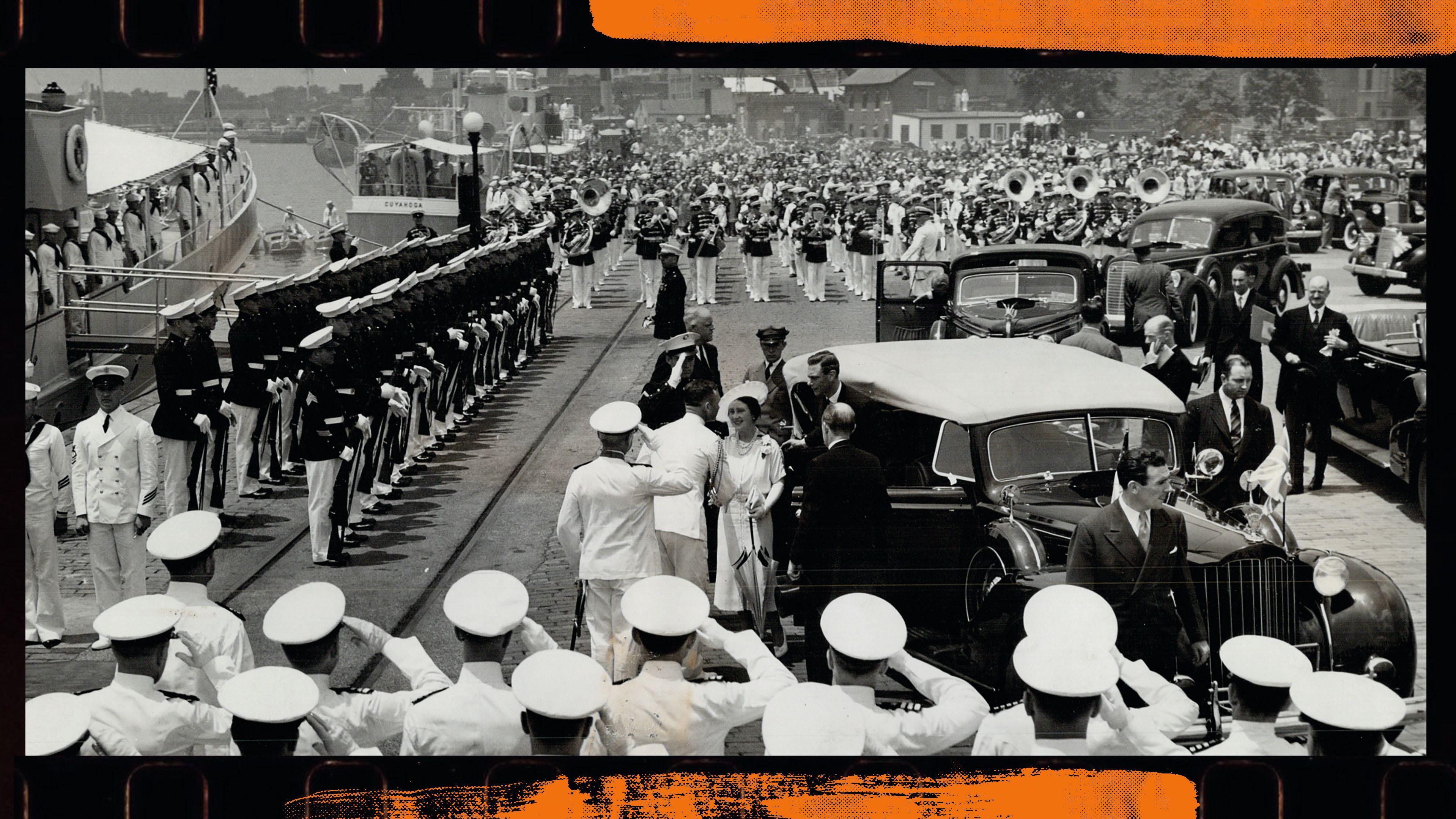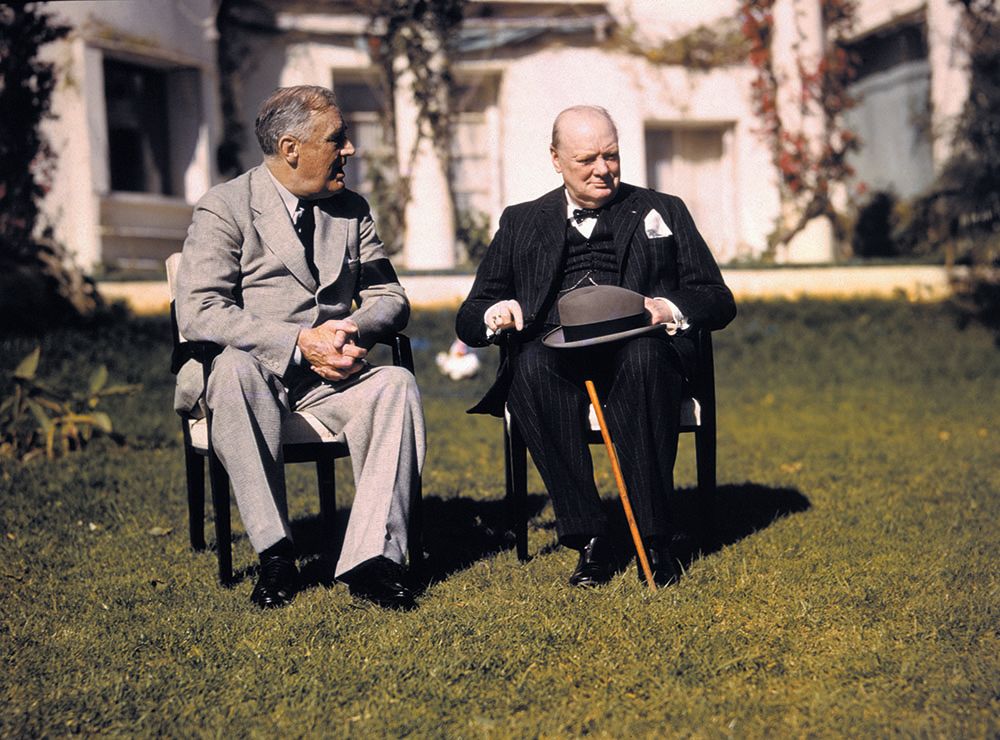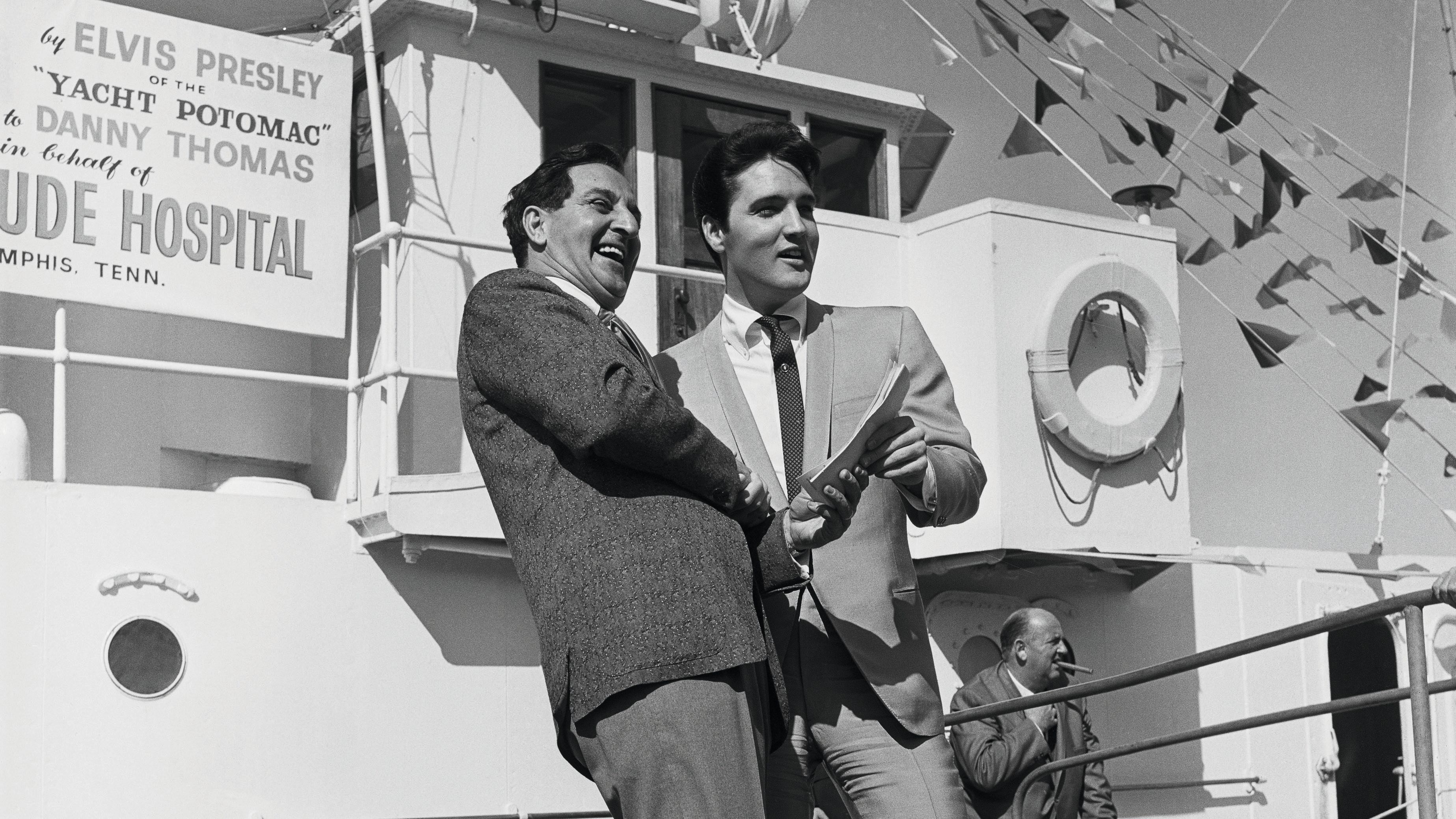TO HONOUR
AND SERVE
As much as a yacht can, the USS Potomac tells the story of modern America
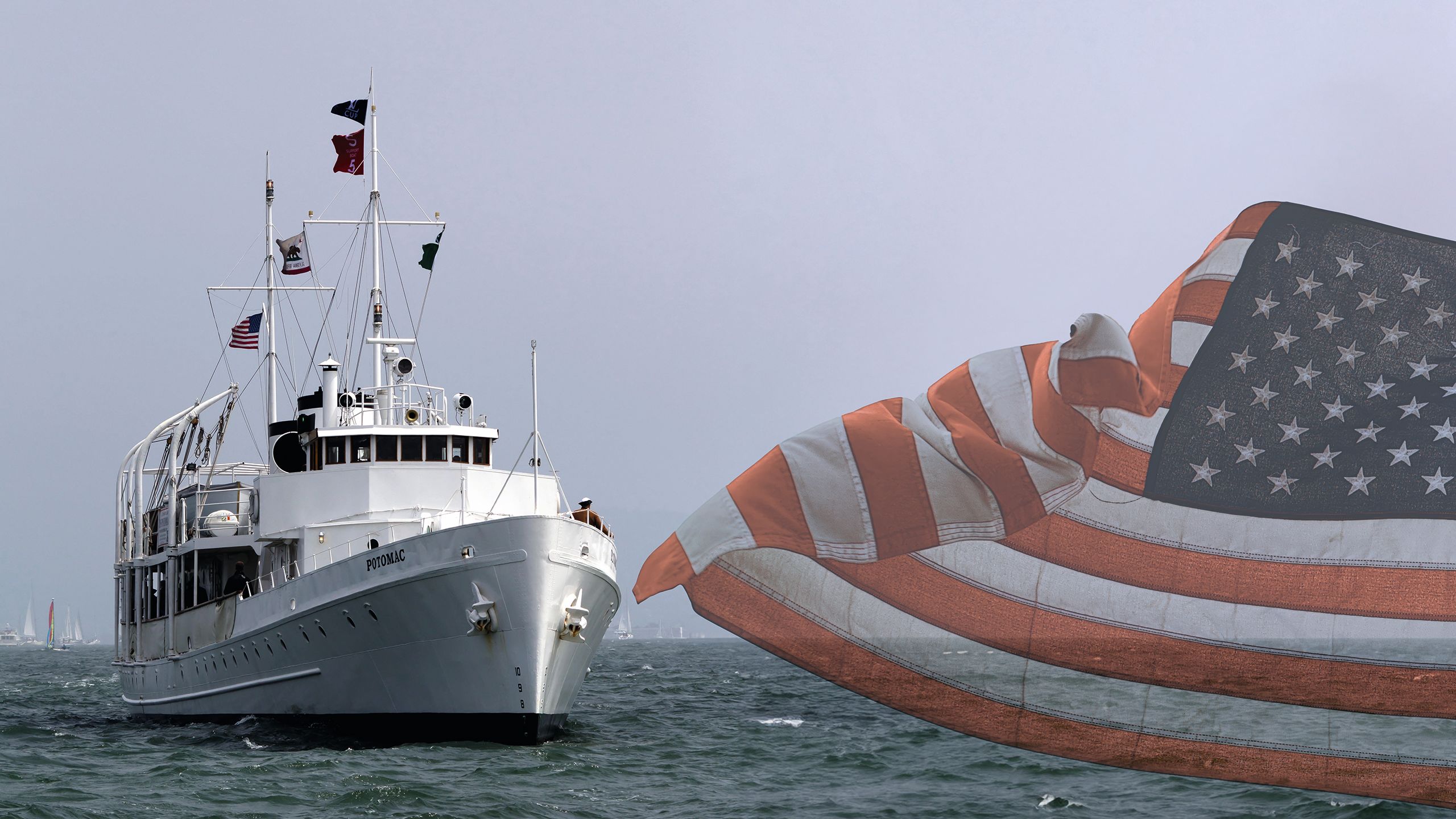
The USS Potomac’s journey is as captivating as the history it witnessed. Daniel Pembrey explores her life as a US Coast Guard cutter, presidential yacht, Memphis Mafia hangout and drug mule until her redemption and restoration as a national landmark
RICK PISIO - RWP PHOTOGRAPHY, ALAMY STOCK PHOTO and
IAN HARPER ON UNSPLASH
For the first time, Michael Roosevelt, 78, grandson of Franklin Delano Roosevelt (FDR), shares the vessel’s secrets as an elite US Coast Guard cutter built in the Midwest 90 years ago to outrun rum runners during Prohibition, before FDR chose her in 1935 as his presidential yacht and “floating White House”. She served in some of the Second World War’s more consequential moments in the Atlantic.
After FDR died in 1945, she drifted. Elvis Presley rescued her; still she succumbed to the post-war counterculture as the venue for a spectacular drug bust in 1980. She was remade on the West Coast to become the oldest decommissioned US Navy ship still in daily operations (with no retirement in sight), exemplifying service and values transcending the more mortal histories of most yachts. If proof of her relevance were needed, look no further than the D-Day 80th anniversary commemoration in San Francisco Bay last June, which she helmed.
DAVID SANGER PHOTOGRAPHY - ALAMY STOCK PHOTOThe USS Potomac in her current location of Oakland, California
DAVID SANGER PHOTOGRAPHY - ALAMY STOCK PHOTOThe USS Potomac in her current location of Oakland, California
Dramatically side-launched by the Manitowoc Shipbuilding Company of Wisconsin in June 1934, US Coast Guard Cutter Electra was delivered a few months too late to play her original role.
“Prohibition, which FDR had opposed, ended in December 1933,” says Roosevelt, an attorney at a San Francisco law firm. One of the more unusual chapters in US history, Prohibition had brought organised crime into the public realm for the first time: the famous “speakeasies” of Al Capone’s Chicago; the backstories to later Godfather movies, plus phrases such as the “real McCoy”, which many say was coined after a rum runner who refrained from diluting his contraband.
The twin-screw, 50-metre cutters that Electra exemplified were forerunners of the Coast Guard vessels seeking to police the cocaine trade and “go-fast” Cigarette boats of the 1980s, as seen on Miami Vice. Only in the 1930s, the interdiction boats were the real show stealers.
“The [50-metres’] primary mission was to trail the motherships that dispensed booze to the smaller, faster vessels beyond the territorial waters of the US,” says Roosevelt. “These Coast Guard cutters had formidable sea-keeping qualities, fine accommodations for crew and good, long range. They also looked sensational.”
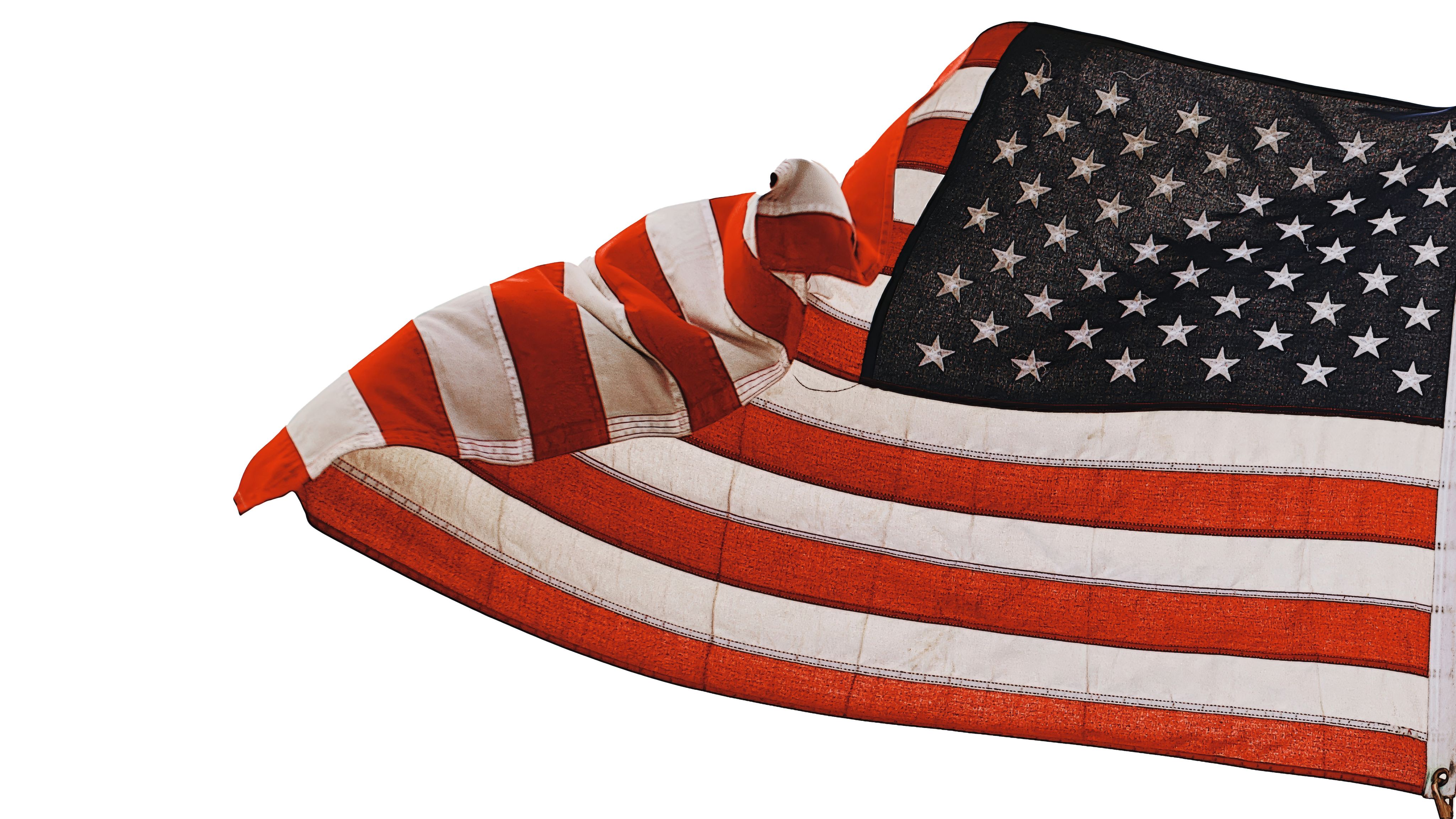
The look was low and sleek, with a raked stem, well-flared bow and no excess freeboard or superstructure. It connoted speed, stealth and an ability to deal with whatever was thrown their way. Indeed, they could exceed 16 knots with almost no strain or vibration, so well engineered were their twin 670-horsepower diesel engines.
The overall build quality was superb: corrosion-resistant wrought iron was used extensively for the pipework. They were also highly manoeuvrable, thanks to the novel arrangement of the twin overhanging rudders, letting them complete a full circle in just over two minutes – at full speed – coming alongside or docking with ease, even in the most testing conditions.
Born in 1882, FDR grew up in New York’s Hudson Valley with an appreciation for all things nautical. He became a strong-jawed, lively eyed assistant secretary of the US Navy. The walls of his bedroom at the White House, which he moved into in 1933 upon becoming president, were covered with paintings of clipper ships, dreadnoughts and river boats. Two forces guided him to replace President Hoover’s ornate wooden yacht Sequoia with Electra, now renamed Potomac.
First, FDR feared being trapped by fire. As a younger man, he’d lost use of his legs to polio; separately, a house fire claimed the life of an aunt. Potomac (unlike Sequoia) was steel-hulled, hence more fire resistant. Second, the Depression defined FDR in the American consciousness via his New Deal public work programmes, “fireside chats” and turns of phrase, most famously: “The only thing we have to fear is fear itself.”
“FDR was such a masterful politician,” says his grandson. “He had such a good feel for the mood of the American people. Potomac was the right yacht for a country emerging from the Depression. There are consistent themes in what he enjoyed: practicality, understatement, with no desire for the grandiose or majestic; rather, a preference for the functional, even the utilitarian. When you board Potomac, you really get a sense of him, choosing and outfitting her the way he did.”
ADOBE STOCKPresident Roosevelt during a fishing trip
ADOBE STOCKPresident Roosevelt during a fishing trip
From amidships forward, she kept the arrangement of a Coast Guard cutter (bridge, radio room, galley and quarters for the officers and crew). From amidships back, however, she transformed into a remarkable yacht. Almost all the superstructure aft of the pilothouse was modified to create a semi-formal dining room, the president’s room (with stainless-steel bathtub), four air-conditioned passenger staterooms, twin galleys and a shaded fantail deck with a sofa contoured to the stern where FDR would work or entertain, enjoying river or ocean views and fresh breezes. Cleverly concealed in the aft smokestack was a hand-operated lift, allowing him to move between decks with relative ease.
FDR had spotted a lift aboard Nourmahal, Vincent Astor’s yacht. As restorers of Potomac would discover half a century later, fitting a plumb-running elevator car in a shaft that is not plumb poses challenges – even when not rolling on high seas. Regardless, FDR was determined to move under his own steam. He needed help from a motorcar parked dockside, but was unusually muscular in his arms and shoulders, and would plant his hands on the gangway railings, resolutely making his way up to the top deck.
He handled the elevator’s manual rope and pulley system himself. Railings ran along the passageways, also at other strategic points; only occasionally did he resort to his wheelchair. His favourite spot was that fantail sofa, more than a metre deep in the middle, that provided good support for his legs and let him stretch out.
BETTMANN - GETTY IMAGESPhotographers capture President Roosevelt on a fishing trip off Long Island
BETTMANN - GETTY IMAGESPhotographers capture President Roosevelt on a fishing trip off Long Island
The white-painted engine room was a marvel in itself, the main engines glistening with white enamel, the rocker arms and piston heads brilliantly chrome plated, the main engine fuel system fashioned from arresting Revere Red brass and the walkways formed of highly polished aluminium floorplates.
Back up top, on a new boat deck, davits were added, letting it stow two Coast Guard surf dories, an eight-metre motor whaleboat and two seven-metre Chris-Craft motorboats (one of which acquired a swivel chair, making it usable for fishing). Ballast was added to compensate for the extra weight, the radio was swapped for longer-range Navy equipment, and the exterior was painted battleship grey, with the presidential seal added on the forward bridge bulkhead. The total bill: $60,000, still only £1 million adjusted for inflation.
“The walls of his bedroom at the White House, which he moved into in 1933 upon becoming president, were covered with paintings of clipper ships, dreadnoughts and river boats”
Potomac was a study in balance between formal and informal life aboard. “As soon as we would leave port, he’d pull off his coat and say, ‘Let’s get comfortable – that goes for the crew, too,’” recalled the chief radioman. FDR also suffered from sinusitis, which could become especially bad in the humidity of a Washington, D.C. summer. The White House air conditioning only aggravated this, so the fresh air aboard the yacht was a tonic. Indeed, a popular joke in Washington circles, says Michael, was that if FDR didn’t already have the three-term lease on the White House, he would have happily lived full time on Potomac.
Aboard, he’d read, play cards, write (speeches, policy papers), congregate with family and enjoy a good cocktail, or look out over the water and think. (“When there is no vision, the people perish,” was another of his sayings.)
Yet perhaps most noteworthy was his love of fishing, whether in the Bahamas (for barracuda or amberjack), the Gulf of Mexico (tarpon or king mackerel) or Chesapeake Bay (croaker, flounder). Often he would reach for his Penn reel from a wooden gear box and fish straight from the fantail. “I’ve seen him come aboard for a weekend looking very, very tired. When he disembarked on Monday morning, his hat brim was tilted up as well as his cigarette and long filter,” said helmsman Joe E. Brown.
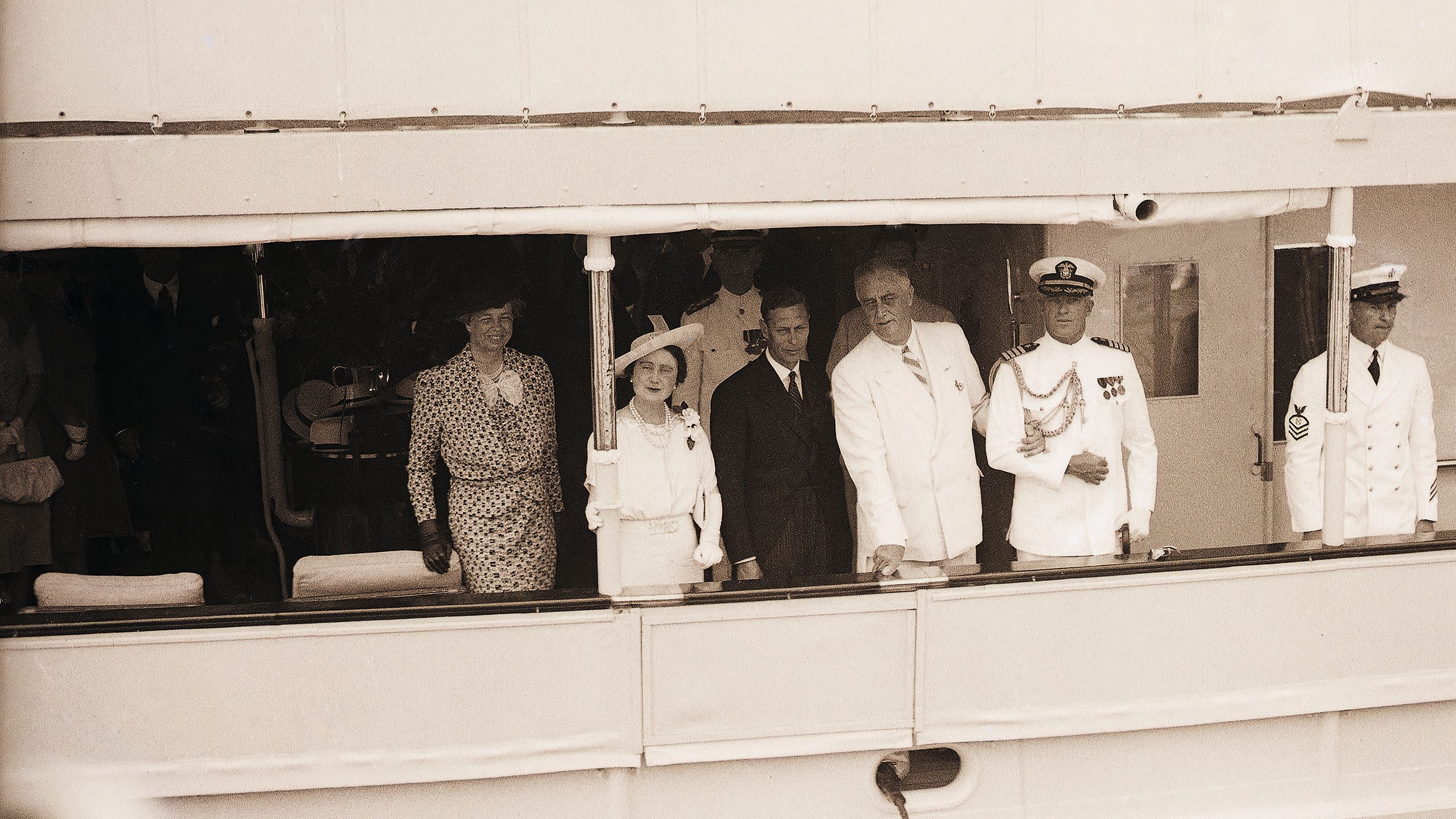

Potomac was not only for personal use, of course: it truly was a presidential yacht. Signed invitations to dockside parties or state receptions on board were highly prized among the capital’s upper echelons. FDR enjoyed his shipmaster role, wearing specially tailored sailing whites. He welcomed aboard guests including Crown Princess Märtha of Norway (a favourite), Queen Wilhelmina of the Netherlands and, on 9 June 1939, King George VI and Queen Elizabeth The Queen Mother.
The sheer volume of the British royals’ luggage was staggering. The yacht’s finishes included brass, wood panelling, deep leather furniture and teak decking – as was befitting of these state occasions; still that didn’t stop the royals from reportedly bringing aboard 19 litres of water that had also made the trip from England. The personal chemistry that developed between the king and FDR would prove important for what lay ahead, however.
ADOBE STOCKThe royal visit in June 1939 was significant in fostering ties between the US and the UK. King George VI and Queen Elizabeth were greeted by Rear-Admiral G. T. Pettengill
ADOBE STOCKThe royal visit in June 1939 was significant in fostering ties between the US and the UK. King George VI and Queen Elizabeth were greeted by Rear-Admiral G. T. Pettengill
The Second World War came early to US shores. German U-boats soon had the run of the Atlantic. To the .50-calibre machine gun mounted on Potomac’s forecastle (intended for close surface or air targets) were added degaussing wires inside the hull, designed to neutralise magnetic mines, plus thick bulletproof glass around the fantail. Potomac always had other boat escorts, but now flew a larger American flag in a bid to display US neutrality. Her strongest suit would turn out to be the age-old wartime art of deception, though.
In 1941, during an unusually hot summer, Potomac set off on one of her customary fishing expeditions, with FDR boarding at New London, Connecticut, on 3 August. She entered the harbour of Nonquitt, Massachusetts, the following day. Her launches brought aboard Princess Martha of Norway, her brother Prince Carl and the Princess’s children.
The party fished in full view of visitors at a nearby beach, then, at 6.30pm, the Norwegians returned ashore and Potomac made for the Cape Cod Canal. The familiar figure on deck there – fedora hat tilted jauntily, so too the cigarette holder clamped between his teeth – was quite visible to cheering crowds. The figure was not the president, but rather a Secret Service man.
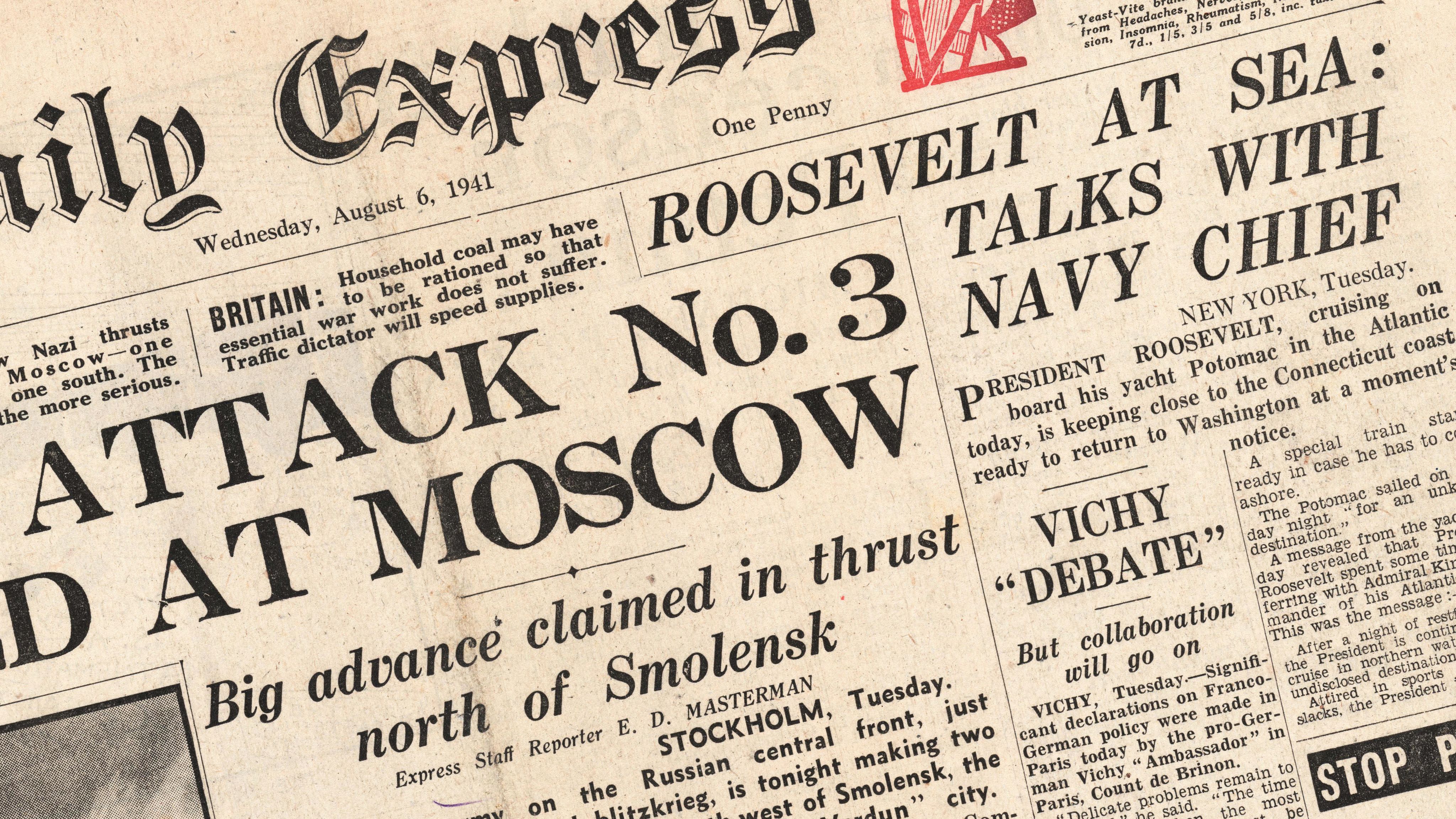
FDR had transferred to the USS Augusta heavy cruiser. By 9 August, he was more than 1,000 kilometres to the north, meeting Winston Churchill in Newfoundland, Canada. The need for secrecy was heightened by Churchill having sailed long distances through dangerous waters aboard HMS Prince of Wales.
The two men hammered out the Atlantic Charter, which not only sought to secure the freedom of the seas but also accelerated a crucial, combined war effort. The US formally entered the war four months later, after the Pearl Harbor attack, but August 1941 can be viewed as a turning point, believes Roosevelt. A similar ruse was deployed in 1943, transferring FDR to the USS Iowa in Chesapeake Bay using a precarious bosun’s chair so that FDR could sail more than 10,000 kilometres to meet Churchill and Joseph Stalin in Tehran, Iran, where the “Big Three” committed to the D-Day Landings of 1944.
BETTMANN - GETTY IMAGESPresident Roosevelt and Prime Minister Winston Churchill talk on the lawn of the president’s villa
BETTMANN - GETTY IMAGESPresident Roosevelt and Prime Minister Winston Churchill talk on the lawn of the president’s villa
America’s great 32nd president died of a cerebral hemorrhage – aged just 63 – on 12 April 1945, a mere four months before the war finally ended. The connection between FDR and Potomac was driven home when President Truman promptly sold her. She was now the Maryland governor’s yacht, with no crowned heads of state on the guest list, eventually snagging a dredging cable in her namesake river in 1958, wrecking those twin propellers and rudders.
The American people could be forgiven for focusing elsewhere. The post-war period was a time of unprecedented prosperity, personal freedom, mobility, ease of living and the thrilling possibilities these afforded individual consumers. Cars, novel household appliances and even boats came within reach of most citizens. One company taking advantage of this was the speedboat maker Glastron, whose fibreglass models were even styled after automobiles (tailfins et al), and one of Glastron’s great customers was Elvis Presley.
Presley loved taking time out of his hectic schedule to “kick back” on McKellar Lake in Memphis, Tennessee, on his 1962 five-metre tropic-tan and white Glastron Bayflite DeVille 163, designed to plane over the water while sporting the faring of a car.
Yet onto the horizon came the quartet from Liverpool. When The Beatles played The Ed Sullivan Show in February 1964, they stopped in Miami to hop aboard a Formula 233 offshore speedboat, hosted by its charismatic rulebreaking creator Don Aronow, the man behind those offshore Cigarettes. A growing sense of unease among the “Memphis Mafia” (as Presley’s inner circle was known) put them on the lookout for bold PR opportunities.
Elvis Presley bought her for $55,000, to “keep it from winding up in a junk heap,” he said with his signature lip curl
Meanwhile, the vessel once known as USCGC Electra had drifted to Bridgetown in Barbados, barely seaworthy, where her latest owner hatched a plan to sail her through the Panama Canal and up the US West Coast. The intended destination was the 1962 Seattle World’s Fair that envisioned a future imbued with technological optimism, only rooted in the 1950s, apparently not anticipating the cultural tumult to come.
Potomac only made it as far as Los Angeles, where she languished. Presley would shoot movies at the city’s Marina Del Ray during the mid-1960s, notably Easy Come, Easy Go, which showcased his nautical and patriotic credentials (he’d served in the military from 1958 to 1960).
The Memphis Mafia now “landed” on the ex-presidential yacht. In early 1964, Presley bought her for $55,000 (£425,000 in today’s money) to “keep it from winding up in a junk heap,” he said with his signature lip curl. The plan was to gift Potomac to the national foundation March of Dimes, so that she might be preserved as a national monument, but the charity baulked at the maintenance costs.
BETTMANN - GETTY IMAGESElvis Presley turns over the papers for the boat to Danny Thomas, founder of St. Jude Hospital in Memphis
BETTMANN - GETTY IMAGESElvis Presley turns over the papers for the boat to Danny Thomas, founder of St. Jude Hospital in Memphis
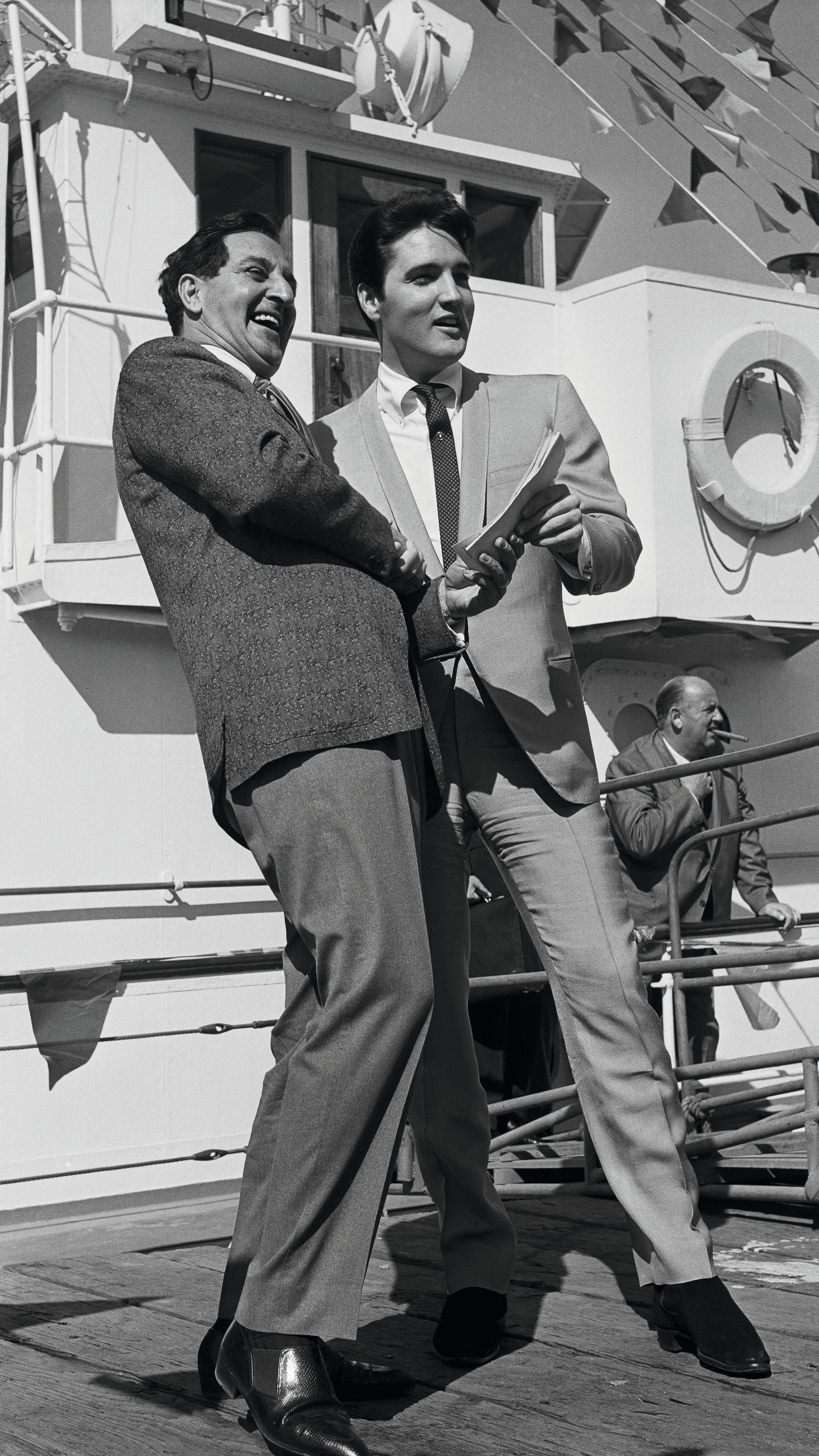
Presley next gave her to St. Jude Children’s Research Hospital in Memphis, a favourite charity of his (and of his manager, Colonel Tom Parker). On February 3, 1964, the Memphis Mafia held their press event aboard. Presley looked tall, youthful and resplendent in a narrow-lapelled suit and thin tie. Yet the hospital also baulked at the expense of moving her to Memphis, and soon sold her to an heiress to the estate of a Boston Red Sox baseball player who’d reportedly known FDR.
Potomac continued to languish, progressively stripped by souvenir hunters and vandals changing hands once more, finally ending up being leased to Aubrey Phillips, a Long Beach bail bondsman and a character.
On 12 September 1980, Walter Abernathy, the 44-year-old executive director of the Port of Oakland, went down to the front door of his house just across the bay from San Francisco. It was a perfect early autumnal day: extra sunny with a sharp breeze; the city blotchy white, the hard building outlines arranged in clumps down to the water, all white caps. Walter picked up his copy of The San Francisco Chronicle. “Big S.F. Pot Raid—$40 Million Cargo Seized,” blazed the headline. “16 Arrested – 2 Yachts Taken In.”
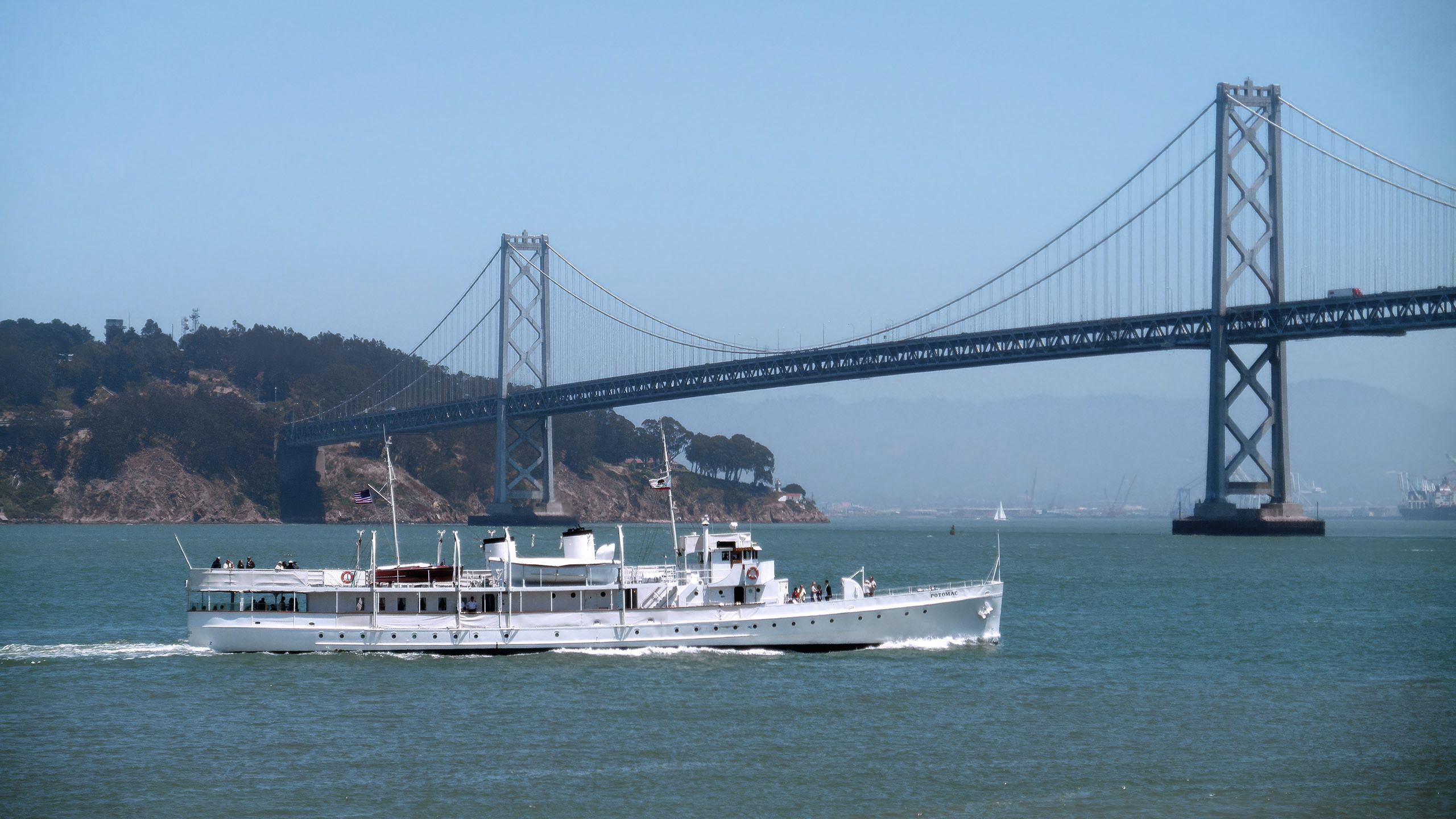
ERIC BVD - ADOBE STOCKThe USS Potomac under power near the Oakland Bay Bridge
ERIC BVD - ADOBE STOCKThe USS Potomac under power near the Oakland Bay Bridge
Walter’s mouth opened wider as he read on: “Twenty tons of Colombian marijuana were seized on the San Francisco waterfront early yesterday along with two vessels, one of them President Franklin D. Roosevelt’s historic Potomac and the other a luxurious Southern California yacht. “Fifteen men and a woman were arrested after a dramatic raid at Pier 26, as gunnysacks reeking of high-quality marijuana were being loaded into a truck-trailer labelled ‘Crippled Children’s Society of America.’”
This charity – with which Aubrey Phillips had somehow become entangled – was, of course, bogus. The splash quoted US Attorney G. William Hunter declaring it to be “the largest one-time seizure in the western US,” and putting a street value of $40 million on the haul. “More than 40 investigators from state and federal agencies, aided by Coast Guard agents and a helicopter, swooped down at 1.00am on the Valkyrie and the Potomac as they were berthed at Pier 26,” it went on.

Equally striking was how San Francisco’s paper of record seemed to scorn the raid, with a companion piece titled, “Supply Was Already Short. Raid Shakes the Dope World”. It read: “Dope smokers and dealers were upset and angry yesterday over the huge marijuana bust in San Francisco that came smack in the middle of the worst pot shortage in Northern California in more than a decade. The 20-ton cache of top-grade Colombian red and gold marijuana, enough to make 640,000 one-ounce lids or 25.6 million joints, would have significantly alleviated the late summer shortage...” It quoted a San Francisco dealer complaining, “Smugglers are just not trying to slip through all those government ships.”
Worse was to come. Arrested like a person (as allowed by maritime law), Potomac was back with the US Coast Guard, only this time in its custody, moored at Treasure Island Naval Station in San Francisco Bay. There, sharply broken pilings holed her. She sank in 10 metres of water. Only her davits, smokestacks, top of pilothouse and foremast remained visible. Her ownership would change one last time, auctioned as a wasting asset – her ignominy final.
The auction was set for “high noon” on April 21, 1981, at the Port of Oakland. Potomac had been raised but was still a leaking hulk. Walter Abernathy was in a meeting inside one of the Port’s office buildings when a Customs officer walked in, asking him if he wanted to bid.
Abernathy’s understanding was that he’d serve to get the auction going (a large media crowd had gathered), priming the pump, as it were – just as FDR’s public works programmes had done for the economy during the Depression. “I put in an opening bid of $15,000 and pretty soon it was a question of whether I’d bought it for the Port or for myself,” recalls Abernathy.
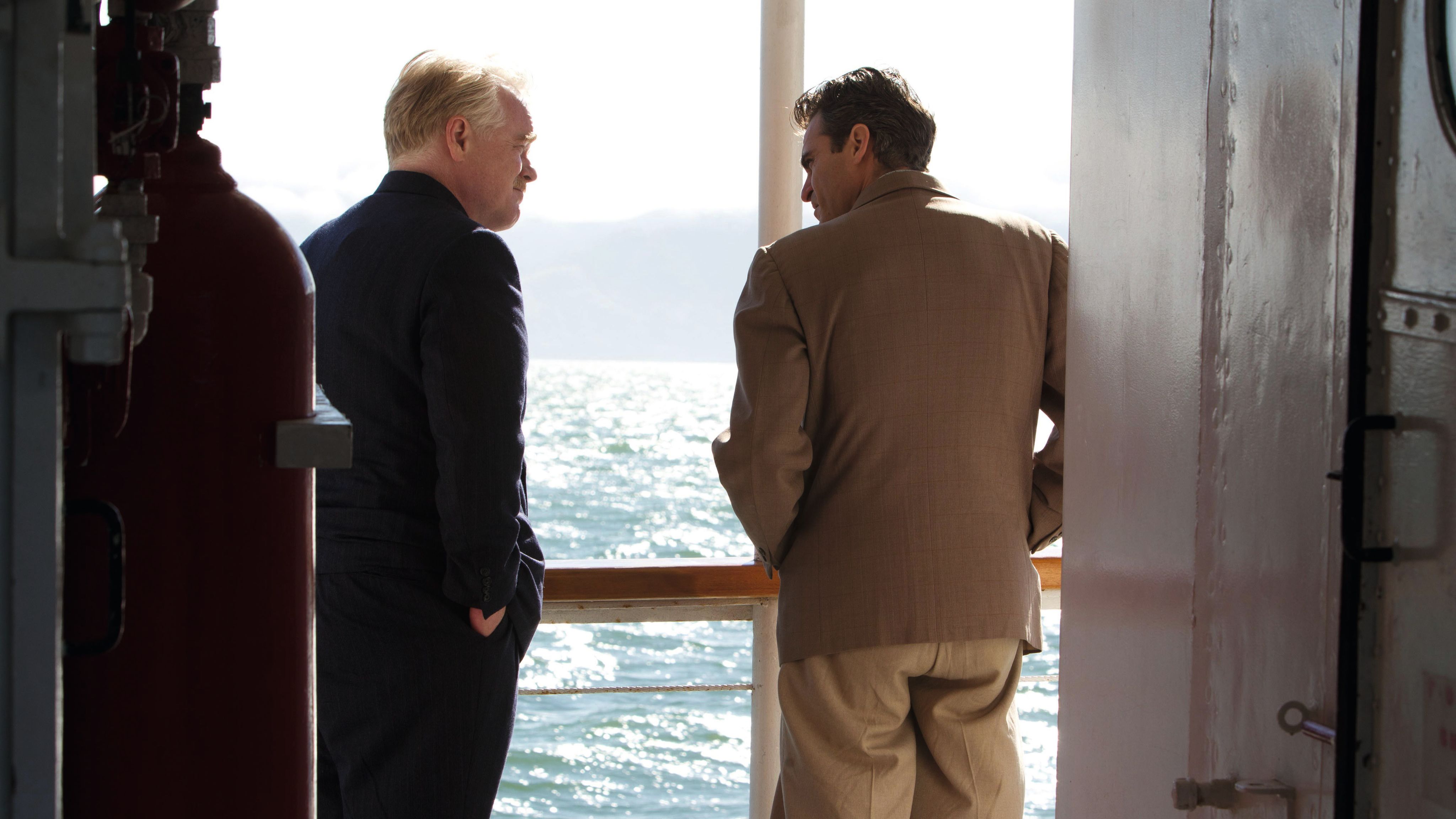
GHOULARDI FILM COMPANY - KOBAL - SHUTTERSTOCKA movie still from The Master featuring Philip Seymour Hoffman and Joaquin Phoenix shot on Potomac
GHOULARDI FILM COMPANY - KOBAL - SHUTTERSTOCKA movie still from The Master featuring Philip Seymour Hoffman and Joaquin Phoenix shot on Potomac
Fortunately, California, and the country, came to the yacht’s rescue. “The restoration needed to be done right,” says Roosevelt, whose father James (FDR’s son) chaired a hastily organised Association for the Preservation of the Presidential Yacht Potomac.
“Doing it right” meant a cost of $5 million, but in a stroke of luck, the then-president Ronald Reagan had been state governor. When the California Conservation Corps took an interest in the project, so too did Reagan. In a meeting with the eldest son of the interventionist Democratic ex-president, the famously free-marketeer Republican president agreed to make a $2.5 million matching federal grant.
“FDR was such a masterful politician. He had such a good feel for the mood of the American people. Potomac was the right yacht for a country emerging from the Depression”
The firms rallying read like a Who’s Who of the makers of the West. Naval architect Philip Spaulding of Seattle’s Nickum & Spaulding was known for designing ferries and other ships used the length of the West Coast from the Golden Gate Ferry to the Alaska Marine Highway.
The similarly prolific Crowley Maritime dated back to the provisioning of tall sailing ships once anchored in San Francisco Bay. Matson, providing navigation services, was the largest shipping and transportation company between the West Coast and Hawaii when FDR served as assistant secretary of the Navy, and Henry Kaiser, founder of Kaiser Aluminum and Chemical Corporation, had been heavily involved in building the Hoover Dam, one of FDR’s greatest public works projects. Dwan Elevator dated to 1919, the Colberg shipyard (where the work was done) to the 1890s, and on.
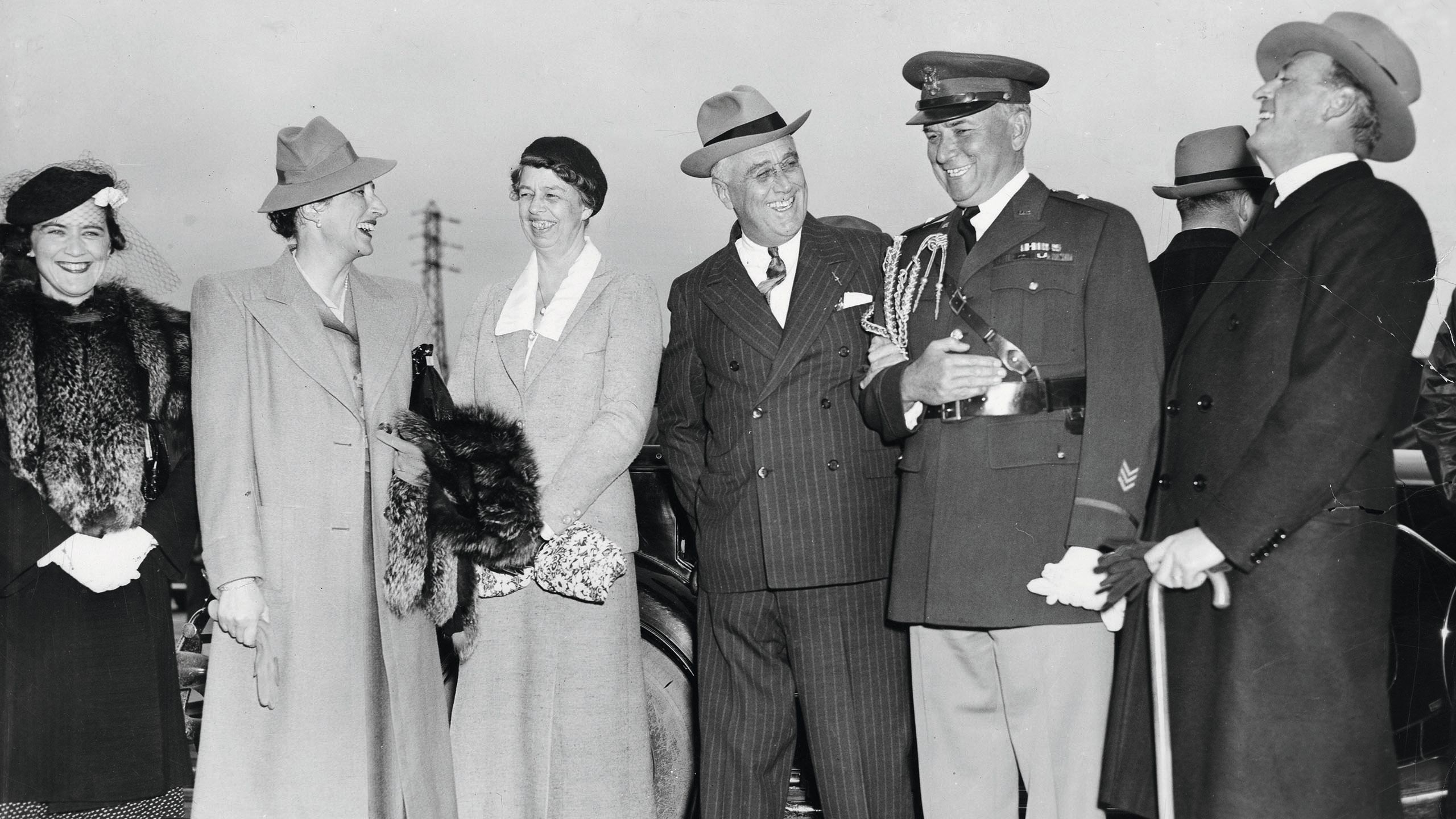

FDR equally had a place in the hearts of skilled workers and trade unions during the 1980s and early 1990s – a time of widespread de-industrialisation. “He did so much to bring about a level of safety and security at a time when these were so sorely needed,” says Rick Anderson, one of the many who gave up their evenings and weekends on the project – in Anderson’s case, reinstating the teak decking. Potomac was finally able to receive visitors again – with wheelchair access – on Maritime Day (May 20), 1995.
She has since welcomed innumerable visitors while berthed at Jack London Square in Oakland, and served as a prop in Hollywood movies to boot, but a priority remains keeping her seaworthy, even if this means some $100,000 in annual drydocking costs.
On 6 June 2024, for the 80th anniversary of the D-Day Landings, Potomac sailed ceremonially from Oakland into the San Francisco Bay. Near the Golden Gate Bridge, she slowed to idle for a floral toss. A lone bugler played “Taps”, originally a call for soldiers to extinguish their lamps and sleep – now a farewell to the fallen, including those from the less well supported wars of the 1960s, 1970s and our century.
“She’s big enough that you don’t feel confined wherever you’re aboard, yet small enough that there’s a sense of intimacy, too,” says Roosevelt. “An aunt of mine chartered her and held a family event on board, and we took her out and went around Angel Island [near Golden Gate Bridge]. It was a nice, clear night, and as we came back around, a full moon hung over the East Bay hills. It all just looked so serene. You really get a sense of how imposing yet comfortable Potomac is. You can be in the bow and feel quite removed from the fantail. You can be on the fantail, and it just sort of becomes its own world. Or you can be up on the top deck, and it’s as if you’re standing on a platform with this sense of being transported to another place: a bigger place.”
First published in the November 2024 issue of BOAT International. Get this magazine sent straight to your door, or subscribe and never miss an issue.


